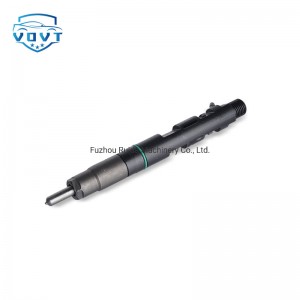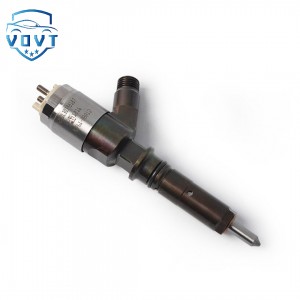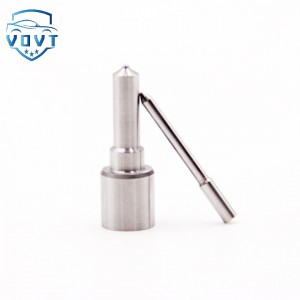Genuine Quality Diesel Injector Repair Kit Adjusting Shim 0.045MM Injector Parts Engine Parts Auto Parts
products description
| Reference. Codes | 0.045MM |
| OE/OEM Codes | / |
| Application | Injector Repair Kits |
| MOQ | 4PC |
| Certification | ISO9001 |
| Place of Origin | China |
| Packaging | Neutral packing |
| Quality Control | 100% tested before shipment |
| Lead time | 7~15 working days |
| Payment | T/T, L/C, Paypal, Western Union or as your requirement |
Injector adjustment gasket: structure, function and precise adjustment
I. Structure and Types of Injector Adjustment Shims
Injector adjustment shims come in a variety of types, including valve spring adjustment shims, armature lift adjustment shims, cushion lift adjustment shims, nozzle spring adjustment shims, and needle lift adjustment shims. Structurally, they are typically thin, circular or clamp-shaped discs, often made of metal or composite materials with specialized properties. For example, in the Bosch CRIN2 truck injector, the valve spring adjustment shim is a flat, circular disc with micron-level thickness accuracy. It is located in a specific position within the injector and is used to adjust the solenoid spring force. The armature lift adjustment shim is also circular and comes in a variety of thicknesses, ranging from 0.950 to 1.684mm, with a thickness difference of 0.004mm between each shim. It plays a key role in controlling armature bounce within the injector.
II. Working Principle and Functional Impact
2.1 Valve Spring Adjustment Shim
This shim adjusts the preload of the solenoid valve spring by varying its thickness. The valve spring force setting values for different injector types vary. For example, the valve spring force setting range for CRIN injectors ranges from 58N to 85N, with a maximum tolerance of ±3N. If the valve spring adjustment shim is too thick, the spring force will be too high, increasing the injector's opening pressure and reducing the injection volume. Conversely, if the shim is too thin, the spring force will be insufficient, causing the injector to open prematurely and increasing the injection volume. This, in turn, affects the injection volume across the entire injection area, particularly at the discharge point.
2.2 Armature Lift Adjustment Shim
The armature lift adjustment shim's primary function is to adjust the armature lift. The armature lift setting varies between different injectors. For example, the armature lift setting for CRIN injectors ranges from 40 to 60 microns. CRIN2 injectors for the Chinese market are mostly set at 52 or 55 microns, with a maximum tolerance of ±5 microns. Armature lift varies with shim thickness. If the armature lift exceeds the set range, either too large or too small, the injector will not spray or the injection volume will be severely abnormal. Within the normal tolerance range, the armature lift primarily affects the amount of fuel at the pilot injection point, with minimal impact on other injection points.
2.3 Buffer Lift Adjustment Shims
Buffer lift shims are typically open-end clamp-shaped and are used to adjust the maximum armature displacement during operation. Thickness requirements are strict, with a set value between 20 and 60 microns, and a maximum tolerance of ±20 microns. If the shim is too thick, it will directly increase the amount of fuel returned from the injector. While variations in thickness within the maximum allowable tolerance range will have little effect on the injection volume at each individual test point, they will affect the total amount of fuel injected over a short period of time.
2.4 Nozzle Spring Adjustment Shim
The nozzle spring adjustment shim is used to adjust the nozzle spring force, commonly known as the nozzle needle valve opening pressure. For example, the spring force of a CRIN2 nozzle is typically set at 34N, with a maximum allowable tolerance of ±3N. Excessive spring force can cause deviations in injection volume, especially at idle, significantly impacting engine stability.
2.5 Needle Valve Lift Adjustment Shim
The needle valve lift adjustment shim determines the maximum displacement of the nozzle needle valve during operation. The setting value varies depending on the injector model, generally ranging from 200 to 350 microns, with a maximum allowable tolerance of ±10 microns. It directly indicates the amount of fuel injected by the injector under different rail pressures and energization times, and has a critical impact on the injector's injection performance.
III. Key Points for Adjustment Shim Selection and Installation
When selecting an adjustment shim, it's important to consider the specific injector model, performance requirements, and detailed measurement data. For example, when inspecting an injector, maintenance personnel must first accurately measure parameters such as armature lift and needle lift. Based on these measurements, they can select a shim of appropriate thickness from a wide range of available shims. For example, measuring the lift of a nozzle needle valve to determine the thickness of a nozzle needle valve shim. If the measured value indicates excessive needle valve lift, a thinner shim should be selected to reduce the lift; otherwise, a thicker shim should be selected. When installing the adjustment shim, ensure that it is positioned accurately, the shim surface is clean and free of impurities, and that the shim is protected from damage or deformation during installation. This can affect the adjustment and, in turn, the overall performance of the injector. Injector adjustment shims, with their diverse types and precise adjustment capabilities, play a key role in optimizing injector performance. From structural design to functional implementation and selection and installation, every step is closely linked, crucial to precise injector injection and efficient and stable engine operation. As engine technology continues to advance, research and application of injector adjustment shims will continue to deepen to meet ever-higher performance demands.





















